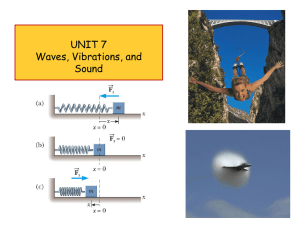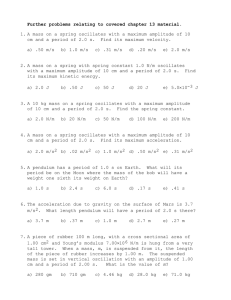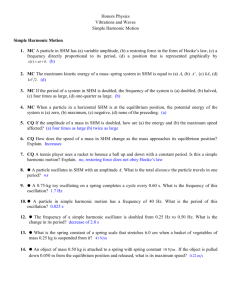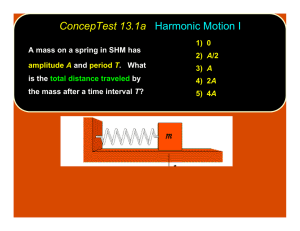1) total energy will increase 2) total energy will not change 3) total
advertisement
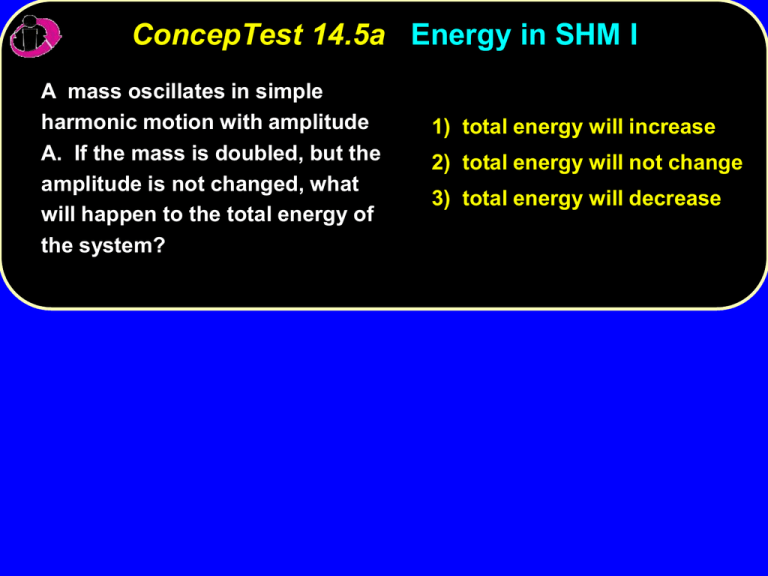
ConcepTest 14.5a Energy in SHM I A mass oscillates in simple harmonic motion with amplitude A. If the mass is doubled, but the amplitude is not changed, what will happen to the total energy of the system? 1) total energy will increase 2) total energy will not change 3) total energy will decrease ConcepTest 14.5a Energy in SHM I A mass oscillates in simple harmonic motion with amplitude A. If the mass is doubled, but the amplitude is not changed, what will happen to the total energy of the system? 1) total energy will increase 2) total energy will not change 3) total energy will decrease The total energy is equal to the initial value of the elastic potential energy, which is PEs = 1/2 kA2. This does not depend on mass, so a change in mass will not affect the energy of the system. Follow-up: What happens if you double the amplitude? ConcepTest 14.5b Energy in SHM II If the amplitude of a simple 1) frequency harmonic oscillator is doubled, 2) period which of the following quantities 3) maximum speed will change the most? 4) maximum acceleration 5) total mechanical energy ConcepTest 14.5b Energy in SHM II If the amplitude of a simple 1) frequency harmonic oscillator is doubled, 2) period which of the following quantities 3) maximum speed will change the most? 4) maximum acceleration 5) total mechanical energy Frequency and period do not depend on amplitude at all, so they will not change. Maximum acceleration and maximum speed do depend on amplitude, and both of these quantities will double (you should think about why this is so). The total energy equals the initial potential energy, which depends on the square of the amplitude, so that will quadruple. Follow-up: Why do maximum acceleration and speed double? Four springs have been compressed from their equilibrium position at x = 0 cm. When released, they will start to oscillate. Rank in order, from highest to lowest, the maximum speeds of the oscillators. 1. c > b > a = d 2. c > b > a > d 3. d > a > b > c 4. a = d > b > c 5. b > c > a = d Four springs have been compressed from their equilibrium position at x = 0 cm. When released, they will start to oscillate. Rank in order, from highest to lowest, the maximum speeds of the oscillators. 1. c > b > a = d 2. c > b > a > d 3. d > a > b > c 4. a = d > b > c 5. b > c > a = d

